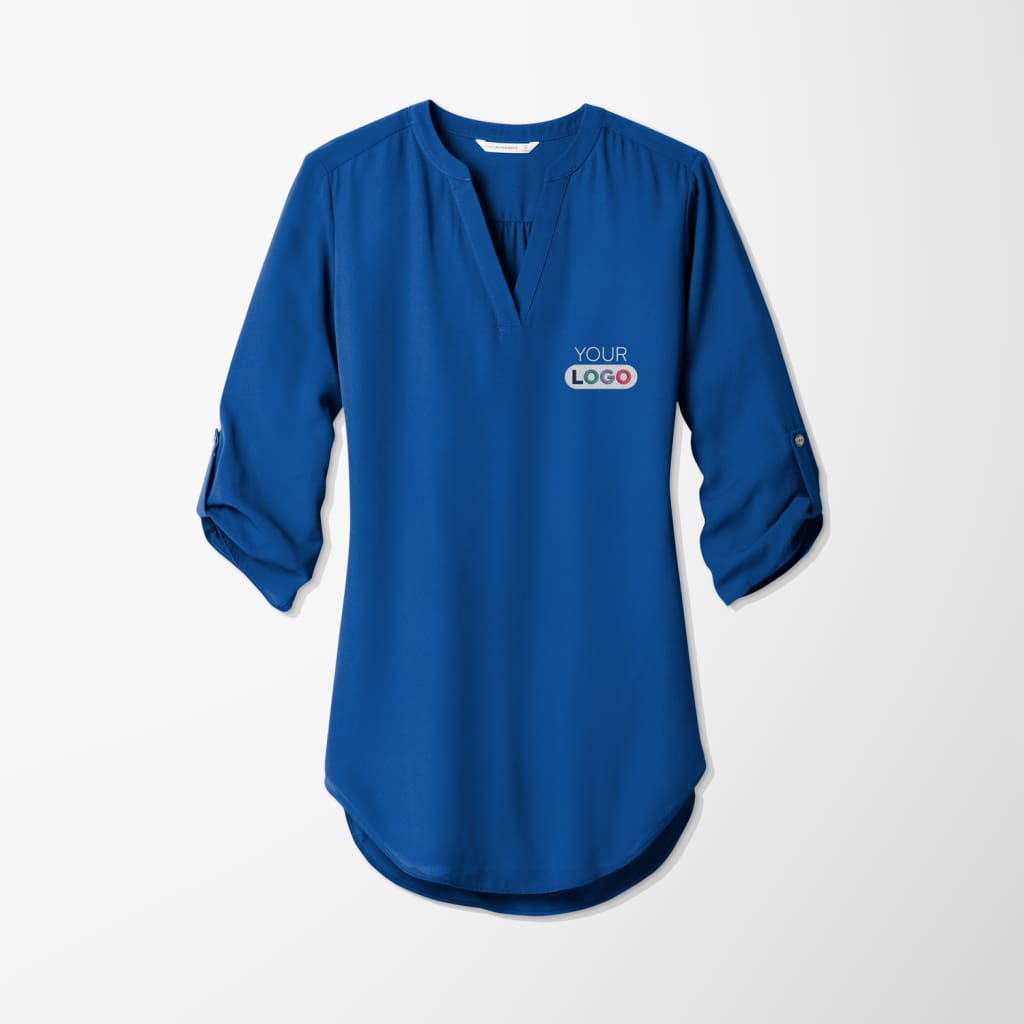The Relevance of Sustainable Clothing: How It Affects the Atmosphere and Your Closet
Lasting clothing is increasingly identified for its essential function in decreasing the ecological influence of the fast apparel industry. By concentrating on environment-friendly products and moral manufacturing methods, it deals with pushing eco-friendly problems. This shift not only benefits the planet yet likewise affects consumer choices, causing a more thoughtful approach to wardrobe administration. Recognizing these dynamics raises vital questions concerning style's future and personal duty in forming it.
The Ecological Impact of Rapid Fashion

Advantages of Lasting Products
Lasting products use considerable benefits, specifically through environmentally friendly fabric selections that decrease environmental harm. These products additionally show durability and durability, lowering the requirement for frequent replacements. Therefore, they contribute to an extra lasting fashion business and promote responsible consumer behavior.
Eco-Friendly Material Options
While the garment industry has long been linked with rapid patterns and environmental injury, the surge of green material choices provides a transformative possibility. Lasting products such as natural cotton, hemp, and Tencel have actually gotten appeal because of their reduced ecological effect. These textiles are frequently produced without harmful chemicals and require much less water, decreasing their carbon impact - Branded Clothing. In addition, numerous green materials are eco-friendly, contributing to a round economic situation by lessening waste. Picking lasting materials not just sustains eco accountable practices but additionally promotes much healthier ecological communities. As consumers come to be extra familiar with their purchasing power, the demand for environment-friendly textiles encourages brand names to innovate and adopt more sustainable manufacturing techniques, inevitably benefiting the world and future generations
Longevity and Durability Advantages
Lots of consumers are significantly acknowledging the resilience and long life benefits of lasting materials in their clothing selections. Unlike conventional materials, sustainable materials such as organic cotton, hemp, and recycled polyester are crafted to stand up to damage, resulting in garments that last much longer. This minimized regularity of substitute not just conserves customers cash with time but additionally lessens waste created by rapid fashion. Additionally, sustainable apparel commonly utilizes green manufacturing approaches that boost fabric strength, adding to a reduction in the overall carbon footprint. By buying durable apparel, customers can grow an extra sustainable closet while appreciating top quality items that preserve their aesthetic and capability in time. Longevity and durability stand as vital benefits of selecting lasting materials.
Minimizing Waste Through Lasting Practices
Minimizing waste in the apparel industry can be attained with ingenious practices such as upcycling and repurposing products. Additionally, taking on minimal wardrobe approaches urges consumers to prioritize top quality over quantity, eventually reducing garments consumption. With each other, these strategies contribute substantially to an extra lasting garments version.
Upcycling and Repurposing Products
Upcycling and repurposing materials have become innovative approaches in the apparel industry, transforming thrown out textiles into beneficial new products. This method not only minimizes waste however likewise motivates creative thinking and originality in clothing design. By taking old garments and products, designers can develop special pieces that show individual style while decreasing the demand for new sources. In addition, upcycling often requires less power and water compared to traditional manufacturing processes, considerably reducing the ecological footprint of style. As customers become a lot more familiar with sustainability, the appeal of upcycled clothes proceeds to rise, advertising a circular economic climate. Ultimately, these techniques add to an extra sustainable future, where fashion focuses on ecological health over rapid production and usage.

Minimalist Wardrobe Methods
As individuals progressively seek to decrease their ecological impact, embracing minimalist wardrobe strategies has actually gained traction as a reliable technique to lasting style. These methods highlight top quality over quantity, motivating customers to curate a smaller sized collection of versatile, sturdy garments. By focusing on timeless items that can be blended and matched, people can lower the frequency of purchases and inevitably reduce waste.Additionally, minimalism promotes mindful usage, urging shoppers to assess the environmental and moral ramifications of their options. This technique not only cultivates an extra lasting lifestyle but likewise simplifies everyday decision-making concerning clothes. As people embrace minimal principles, they contribute to a fashion culture that values sustainability and responsible consumerism, eventually causing a more eco-conscious society.
The Function of Moral Labor in Sustainable Fashion
While several consumers are increasingly familiar with the ecological consequences of their apparel choices, the importance of honest labor methods in sustainable fashion can not be overlooked. Ethical labor encompasses reasonable incomes, secure working problems, and regard for workers' rights, developing the foundation of accountable fashion production. Brands that focus on honest labor not just boost neighborhoods however also set a standard for responsibility in the industry.Moreover, the assimilation of moral methods cultivates transparency, enabling customers to make informed options concerning their purchases. This technique contrasts dramatically with rapid fashion's exploitative labor designs, which frequently focus on revenue over people. By supporting companies dedicated to honest labor, consumers add to a system that values human self-respect alongside environmental sustainability. Moral labor is not just an add-on; it is essential to the broader mission of lasting style, making sure that the mission for eco-friendliness does not come at the expense of human rights.
The Impact of Lasting Apparel on Carbon Emissions
Lasting clothes has the potential to greatly lower carbon discharges related to the style market. Conventional garment production adds notably to greenhouse gas exhausts, mostly because of energy-intensive manufacturing procedures and using non-renewable resources. In comparison, sustainable fashion concentrates on green materials, such as organic cotton or recycled fibers, which often call for less energy to produce.Moreover, lasting brand names tend to embrace more reliable manufacturing practices, reducing waste and reducing overall discharges. By prioritizing sturdiness and classic design, lasting apparel urges customers to purchase much less often, additional minimizing the carbon footprint connected with overconsumption.Additionally, several sustainable brand names are devoted to openness in their supply chains, allowing customers to make enlightened choices that straighten with their worths. Ultimately, moving in the direction of sustainable garments can lead to a considerable decrease in carbon exhausts, adding to a much healthier earth and a much more lasting future for the garment industry.
Sustaining Neighborhood Economic Situations With Lasting Choices
The shift towards lasting clothes not only addresses ecological concerns however additionally significantly advantages regional economic situations. By choosing sustainable fashion, consumers commonly sustain local craftsmens and little organizations, enhancing neighborhood durability. These enterprises normally operate a smaller sized scale, focusing on workmanship and honest practices over mass production.Investing in locally made lasting clothes fosters work you could look here production and promotes economic development within areas. As customers end up being more knowledgeable about the environmental impact of their purchases, they increasingly choose items that mirror their worths. This demand encourages local suppliers to take on lasting methods, adding to a circular economy.Moreover, supporting local businesses reduces transportation exhausts, straightening with eco-conscious customer behavior. The interconnectedness of lasting clothing and neighborhood economies emphasizes the crucial duty that private choices play in advertising both financial and environmental wellness. By cultivating these neighborhood connections, communities can thrive while additionally functioning in the direction of a more lasting future.
Transforming Your Wardrobe: Tips for a Sustainable Closet
As individuals seek to reduce their ecological effect, changing a wardrobe into a lasting closet ends up being a vital step. One efficient strategy is to examine existing clothing, maintaining just products that are put on consistently and that straighten with sustainability goals. Focusing on quality over amount is vital; buying durable items from environment-friendly brand names can significantly lower waste.Additionally, incorporating used items can rejuvenate a wardrobe while minimizing environmental damage. Organizing apparel swaps with buddies or giving away extra items can additionally advertise sustainability.When buying, people should seek products that are natural, recycled, or biodegradable, and prevent rapid style retailers - Branded Clothing. Lastly, exercising conscious consumption by thoughtfully taking into consideration each purchase can contribute to an extra check over here lasting lifestyle. By applying these tips, one can create a wardrobe that mirrors personal design while supporting environmental stewardship
Frequently Asked Inquiries
Just How Can I Identify Lasting Clothes Brands?
To recognize lasting apparel brands, one ought to investigate products utilized, look for certifications like Fair Profession, and check out the brand's openness regarding their production procedures, labor methods, and ecological influence, ensuring environmentally friendly and honest methods are focused on.
What Are the Prices Related To Sustainable Fashion?
The expenses connected with sustainable style can differ substantially. Greater production expenses, ethical sourcing, and eco-friendly products usually bring about raised retail rates, which might deter some customers while attracting environmentally aware shoppers.
Can Lasting Apparel Be Fashionable and Stylish?
Sustainable apparel can undoubtedly be stylish and fashionable. Developers progressively prioritize innovative products and honest production techniques, proving that style and sustainability can coexist. Consumers currently have varied alternatives that mix visual appeals with ecological consciousness.
Just How Does Washing Clothing Affect Their Sustainability?
Cleaning clothes greatly influences sustainability by consuming water and energy, adding to air pollution, and causing microplastic release. Constant cleaning can deteriorate textiles, reducing their life-span and raising the need for replacements, inevitably exacerbating environmental worries.
What Is the Life-span of Sustainable Clothes Compared to Quick Style?
The life-span of sustainable clothes commonly exceeds that of quick style products, usually lasting several years because of quality materials and workmanship. On the other hand, quick style garments might degrade rapidly, demanding even more frequent replacements. Lasting clothing is increasingly acknowledged for its essential role in reducing the environmental effect of the quick style sector. While many customers are significantly conscious of the environmental consequences of their garments options, the value of ethical labor methods in sustainable fashion can not be ignored. Branded Clothing. Sustainable clothes has the potential to considerably lower carbon emissions associated with the fashion industry. In comparison, sustainable fashion focuses on green materials, such as natural cotton or recycled fibers, which commonly require much less power to produce.Moreover, sustainable brands have a tendency to adopt much more efficient production methods, reducing waste and lowering total discharges. By prioritizing durability and classic style, lasting apparel motivates consumers to acquire less regularly, additional decreasing the carbon impact useful content connected with overconsumption.Additionally, many sustainable brands are committed to openness in their supply chains, allowing customers to make educated selections that line up with their values